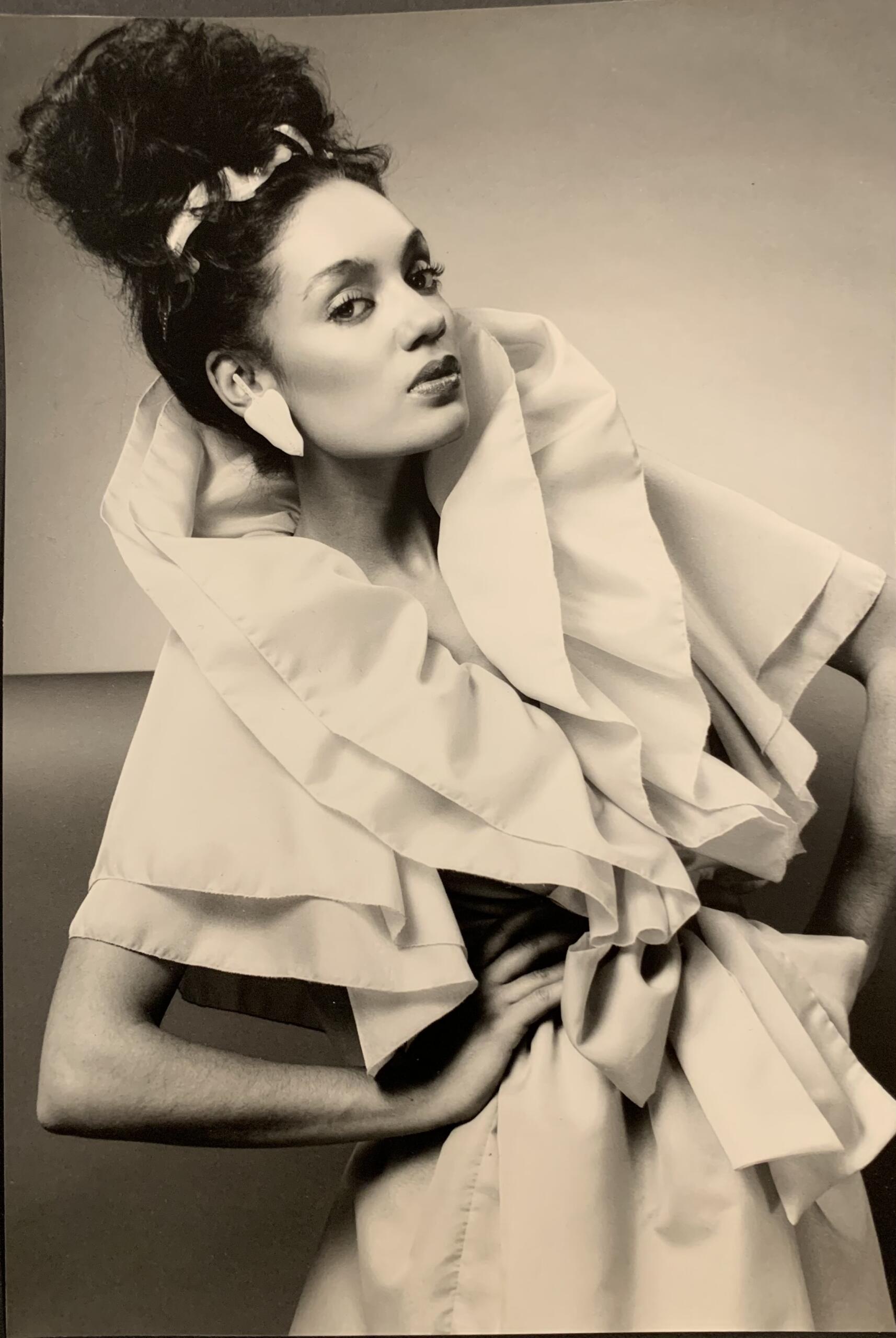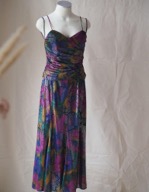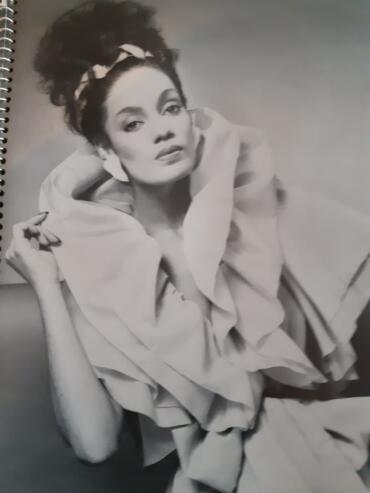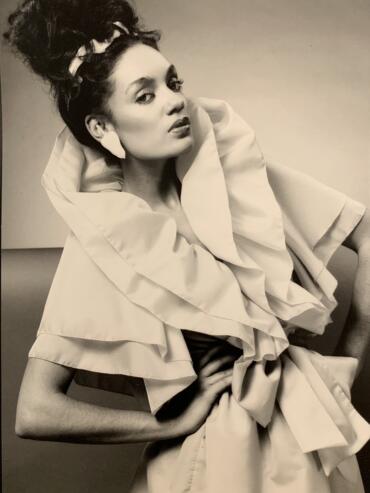June 2022
April 2024
Jessica Ho and Gabrielle Angeli Olano
Charmaine Gooden
Carol Martin
A Jamaican-born fashion designer from the United States was the talk of the Canadian fashion industry back in the 1980s, with designs appearing in some of the top retailers including Holt Renfrew and Creeds.
At 23 years old, he was younger than most upscale Canadian designers, yet Paul Cornish was confident in his evening wear designs. According to Rodney Black, a close friend and former lover of Cornish, he was multi-talented. Aside from fashion, Paul also explored hairstyling and makeup. Plus, he was also a good cook.

Early Life and Career
Cornish was born in Kingston, Jamaica in 1959, and later moved to the U.S.A. with his parents. He studied design and makeup under Joey Wilson at the Fashion Institute of Technology in New York.
In 1978, he moved once again with his parents, this time to Toronto. However, his parents decided to move back to the U.S. a few months later, while Cornish stayed in the city to pursue his career. A year later, Cornish and Black met through work as hairstylists and makeup artists, and Black encouraged him to focus on one aspect of styling. Cornish chose clothing design.
Through Black’s involvement in fashion shows and photoshoots, Cornish began to have his designs fitted and photographed on models, such as Denise McLeod and Pattie Osborne. He also worked with others in the design industry, such as jewellery designer Roy Dean, for whom he would create custom outfits.
I’m trying to make dresses that will appeal to women who want to be a little more extravagant and theatrical.

Osborne and Dean describe working with Cornish as a positive experience. Dean states, “Some people gather attention because of their outgoing personality; his was about his talent.”
He recalls a time when Cornish was tasked with creating an Edwardian-style tuxedo for an event Dean was attending. However, the tuxedo wasn’t up to Cornish’s standards and he entered the fitting room in tears. A perfectionist and a realist, he eventually did work it out the corrections and happily handed over the tuxedo, which Dean says he proudly wore to that year’s Fashion Cares gala and fashion show. As Dean explains, he was “very detail-oriented — the pieces that he created were an extension of himself.”
For Osborne, Cornish’s talent went beyond his confidence and skills. In addition to fitting clothes to his models, he did their hair and makeup, which was unusual for designers at the time, according to Osborne. She says, “If he wanted the hair a certain way, he would make it happen. He was a force in the fashion world.”
Cornish was more than just a talented designer, he was a good friend. When Osborne was five months pregnant with her first child and starting to show, she felt that maternity clothes were ugly. Cornish was so excited for her that he decided to surprise her by designing attractive maternity clothes for her. Since Cornish mainly focused on creating custom pieces, he knew her exact measurements and the styles she liked. Cornish practised this with all his clients and, over time developed a loyal clientele.
Breaking Barriers
Cornish’s legacy in the fashion industry was based on his one-of-a-kind, extravagant, evening couture pieces. In an interview from April of 1982, Cornish stated that he wasn’t interested in designing for mass production. “I’m trying to make dresses that will appeal to women who want to be a little more extravagant and theatrical.” Cornish described himself as “an extremist at heart.” His designs ranged from puffed sleeves and circular skirts to fitted garments with plunging necklines.
Later, in June of that year, Cornish said, “When I design, I first think of all the shapes I want and then of all the fabrics that will do those things for me. I rarely do similar pieces, reproduce pieces I’ve already done. I learned that when I was doing couture, when everybody wanted one of a kind.”Cornish cites Bill Blass and Oscar de la Renta as fashion influences, but said he kept designs in his own perspective at the same time.
Black describes Cornish’s evening wear designs as fluid and over the top with their mix of opaques and sheers. Dean also suggests that Cornish’s pieces had exceptional tailoring and were always tasteful, no matter how extravagant.
What also set him apart from other designers in the ’80s was his use of unconventional fabrics. Osborne says, “Unlike many designers, he wasn’t married to one fabric, he was very experimental.” She describes Cornish as one of the first to use polyester, a fabric known to be used “for old ladies” back in the day, in high-end fashion because he liked the way it would drape. Cornish, himself stated, “I love luxurious-looking fabrics. They don’t have to be expensive as long as they look rich.”
His spring collection consisted of various fabrics such as silk organza and peau de soie with colours of turquoise, white, red and black. For fall, on the other hand, Cornish played with a predominantly black theme while utilizing an amalgam of fabrics, including silk crepe de Chine, organza, taffeta and wool jersey.
Influence and Legacy
Cornish was also passionate about making and inspiring change in the world. In October 1982, he participated in a fashion show for UNICEF which aimed to raise $20,000 in funds for projects in health, sanitation, safe water, and education.
Osborne believes he would be a great role model for Black designers coming into the industry. From her perspective, Cornish didn’t seem to face barriers, he had a good reputation in the industry and is known to be a likeable person.
Osborne states, “It was more so being gay than being Black where he faced barriers. Gay people and couples kept to themselves at the time.”
From Dean’s perspective, being a gay man of colour created more barriers. “I can’t speak to personal situations — it was not something he would discuss. He never thought of himself as a black designer per se. It wasn’t his identity—he was Paul. That’s the way he saw things and the way he designed.”
Addendum: April 2024
References and related links:
- Carter, Joyce. “DESIGNERS FOR UNICEF.” The Globe and Mail, Oct 12, 1982. ProQuest, http://ezproxy.lib.ryerson.ca/login?url=https://www.proquest.com/newspapers/designers-unicef/docview/386665857/se-2?accountid=13631.
- Noah, James. “A NEW APPROACH FOR PAUL CORNISH.” The Globe and Mail, Jun 01, 1982. ProQuest, http://ezproxy.lib.ryerson.ca/login?url=https://www.proquest.com/newspapers/new-approach-paul-cornish/docview/386753023/se-2?accountid=13631.
- Noah, James. “ROMANTIC RUFFLES APPEALING.” The Globe and Mail, Apr 13, 1982. ProQuest, http://ezproxy.lib.ryerson.ca/login?url=https://www.proquest.com/newspapers/romantic-ruffles-appealing/docview/386667631/se-2?accountid=13631.
About the authors:
No posts found!
No posts found!







